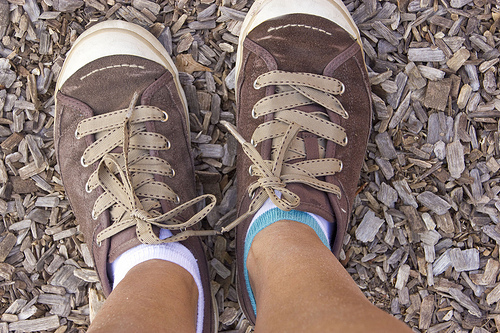In this 5 min podcast I explore scientific evidence for what kind of error correction rate is humanly feasible. We’ll look at industry standards for copyeditors and proofreaders, too.
Press play or see the transcript below.
Mentioned in this podcast:
- “The Mysterious Relationship: Authors and Their Editors” by Rosemary Shipton, in the 2011 compilation Editors, Scholars, and the Social Text.
- Dr. Panko’s research on Human Error
- Rich Adin: An American Copyeditor
- Another post on error rates in books and what triggers a reprint: “How many errors trigger a reprint?” And the podcast version with extended content (8 min).
Calculating Save Percentage
Number of errors corrected ÷ Total number of errors in the document
So, if you catch one of the two errors in a 60,000 word document, your save percentage is .5 (50%).
Correction Fatigue
Greg Ioannou raised an interesting observation in a Facebook discussion: you get a kind of correction fatigue working on documents that are just riddled with errors. This is based on his (mumble) years’ experience supervising other editors.
He explained it with “a made-up example: If the editor catches 9 errors in a 1,000-word passage, you can assume there’s 1 error that the editor missed (a 90% save rate). If the editor catches 90 errors in a 1,000-word passage, you can assume there are 20 errors the editor missed (a 78ish% save rate). The worse the document, the lower the save rate will be.”
Transcript
Welcome to Right Angels and Polo Bears, a podcast about editing English. I am Adrienne Montgomerie.
On this podcast I revisit a post from the now-defunct Copyediting in which I explore scientific evidence for what kind of error correction rate is humanly feasible. We’ll look at industry standards, too.
Some editors offer perfection, but is this reasonable? In a practice such as editing, where there are a lot of choices and few indisputable errors, can we even agree to the terms of reference?
This came up again this week. An editor I know through Facebook came looking for advice.
“I received a “formal complaint” from a client,” <not her real voice>. “There were 5 errors in a 200 page manuscript I copy edited. 3 were spacing issues — two spaces between words instead of one. I understand that the client paid for and should expect to receive an error-free document; that’s reasonable. But is this worthy of a formal complaint?”
Reasonable? Perfection? No, that’s not reasonable. Especially not after a single round of editing.
The spacing issue is pretty common, especially when using tracked changes. And it’s certainly not a mistake that puts lives at risk.
So what IS reasonable for a client to expect? First, do no harm. It’s a phrase we hear a lot. An editor should not INTRODUCE any errors. That seems reasonable. But consider this:
- No one is perfect.
- Some things you think are errors are actually choices.
- Not all editors deal in error correction.
Let’s put this into numbers. We’ll just consider copyeditors and proofreaders here since substantive editors focus on structure, not error correction.
First: If a piece is full of errors, even a 99% accurate editor will leave some errors behind.
Rich Adin wrote about this on his An American Copyeditor blog: “We probably shouldn’t have missed [the misspellings]. On the other hand, there were more than a dozen errors surrounding those missed spellings that we did catch.” <Ooh, his voice is rough today.>
Correcting 95% of errors is the minimum expected of an editor, according to Rosemary Shipton. She is a veteran editor from Toronto wrote about this in her essay “The Mysterious Relationship: Authors and Their Editors.” That was published in a 2011 compilation titled Editors, Scholars, and the Social Text. <There’s a link to that in the show notes.>
80% is what you need to pass a certification exams from the Editors’ Association of Canada. Now, roughly half of the exam is about correcting errors in a sample; the rest tests knowledge of the publishing process and related issues. But that 80% mark is meant as a standard of EXCELLENCE for experienced editors, not just competence.
What does the science say? Well, Dr. Panko of the University of Hawaii did a review of studies on human error rates. According to those studies, 95% is the best a human can do — even a professional proofreader. Yes, there are actually studies that tested professional proofreaders.
And those studies tested obvious errors like transposed letters or using the wrong word — like polO bear for polAR bear. The studies didn’t even look at trickier issues like style or grammar.
You’ll find a link to Dr. Panko’s work in the show notes as well. So you can look into that data more.
LEAVE 5% of the errors in a book? Pick your jaw up off the floor. You’re not perfect. Just remember the excited dread you feel, holding a book you worked on. Those errors jump RIGHT out at you from the very first page you lay eyes on. It’s like Murphy’s law, light.
Publishers make sure that several sets of eyes go over a product:
- a developmental editor,
- a stylistic editor,
- a copyeditor, and
- a proofreader all go over the words with a magnifying glass.
Adin asserts that — In that piece he was reviewing? — “some of the errors the author complained of should have been caught by a proofreader.” He doesn’t expect to be the only set of eyes on a project.
When it simply must be flawless — like, say, for a cookbook or a science lab manual <KABOOM!> — there will also be technical checks and peer reviews, and perhaps 3 proofreaders plus the indexer. And STILL, cookbook authors maintain websites detailing errata that made it into print.
As I said in the last podcast, there simply is no budget that could afford the volume of scrutiny you get from thousands of readers.
So, I stopped peddling perfection. Now I offer “95% better with editor.”
To find the links to the studies, books, and blogs mentioned in this podcast, see the show notes on Right Angels and Polo Bears at: blog [dot] catch the sun [dot] net.
You might also want to listen to “How many errors trigger a reprint?” an episode in which I explore the reality of errors in print and what actually gets corrected.
Thanks for listening.





5 thoughts on “Error Rates in Editing: What’s Your Save Percentage? (podcast)”